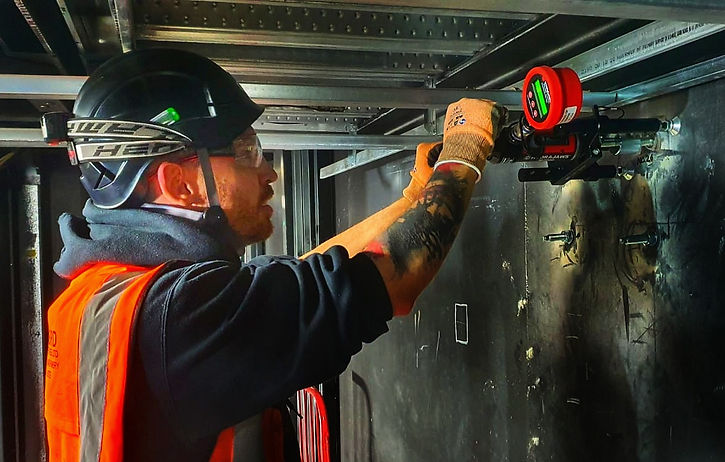Book Appointment 0208 150 7220
Don’t miss out: free site visit available for a limited time. Ends this month.

No Sales Talk - Part of What We Do Is Ensuring You Understand How We De-Risk a High-Risk Activity.
Work With London's Best?
Call 0208 150 7220

Pull Testing
Anchoring Systems • Bracketry • Fixing Solutions • Fastening Components
Anchor validation, pull-out assessment, proof testing — different names, same expertise.
Why have pull out testing?
The purpose of pull out testing is to ensure the correct installation of fixings, confirm they adhere to specific design calculations and requirements, and guarantee safety on site.
Stage 1 – Load Verification
We carry out preliminary and ultimate load investigations by installing and testing no fewer than five representative samples in the specified substrate.
The outcomes provide measurable evidence of anchor behaviour under load. If the results show a shortfall, the data allows the designer to determine whether a revised dimension or alternative fixing system is required.
This process transforms uncertainty into documented assurance, enabling design decisions to be grounded in tested reality rather than theoretical expectation.

Stage 2 - load testing
After installation, anchors cannot simply be assumed to perform. They must be demonstrated under load to secure project approval.
During proof testing, a sample group of installed fixings—normally in the range of 2.5% to 5% of the total—is subjected to applied force. If any element does not meet expectation, the scope of testing is widened until compliance is confirmed.
Findings are delivered without delay: results are reviewed with the client on site, and formal certification is provided the same day.
Through this process, installed systems are not only inspected, but proven—giving assurance that the finished work stands ready for sign-off.
No test should be treated as ordinary.
Each stage calls for technical precision and professional judgement.
That is why every procedure
from setup to final record
must be guided by expertise and carried out with absolute attention.


Load Testing
Lifting Beams & Runway Beams
Why have load testing?
Proof load tests are often required to validate design calculations, demonstrate the quality of an installation or confirm the safety and suitability of a load bearing structure. The proof test load of a component or structure is made up of its maximum design service load multiplied by the proof factor, also known as the safety factor.
Proof load testing is often performed to prove the suitability of a prototype, ensure correct installation prior to entering service, to confirm whether the load bearing structure can withstand additional uses, or to verify whether the existing component is still fit for purpose.


